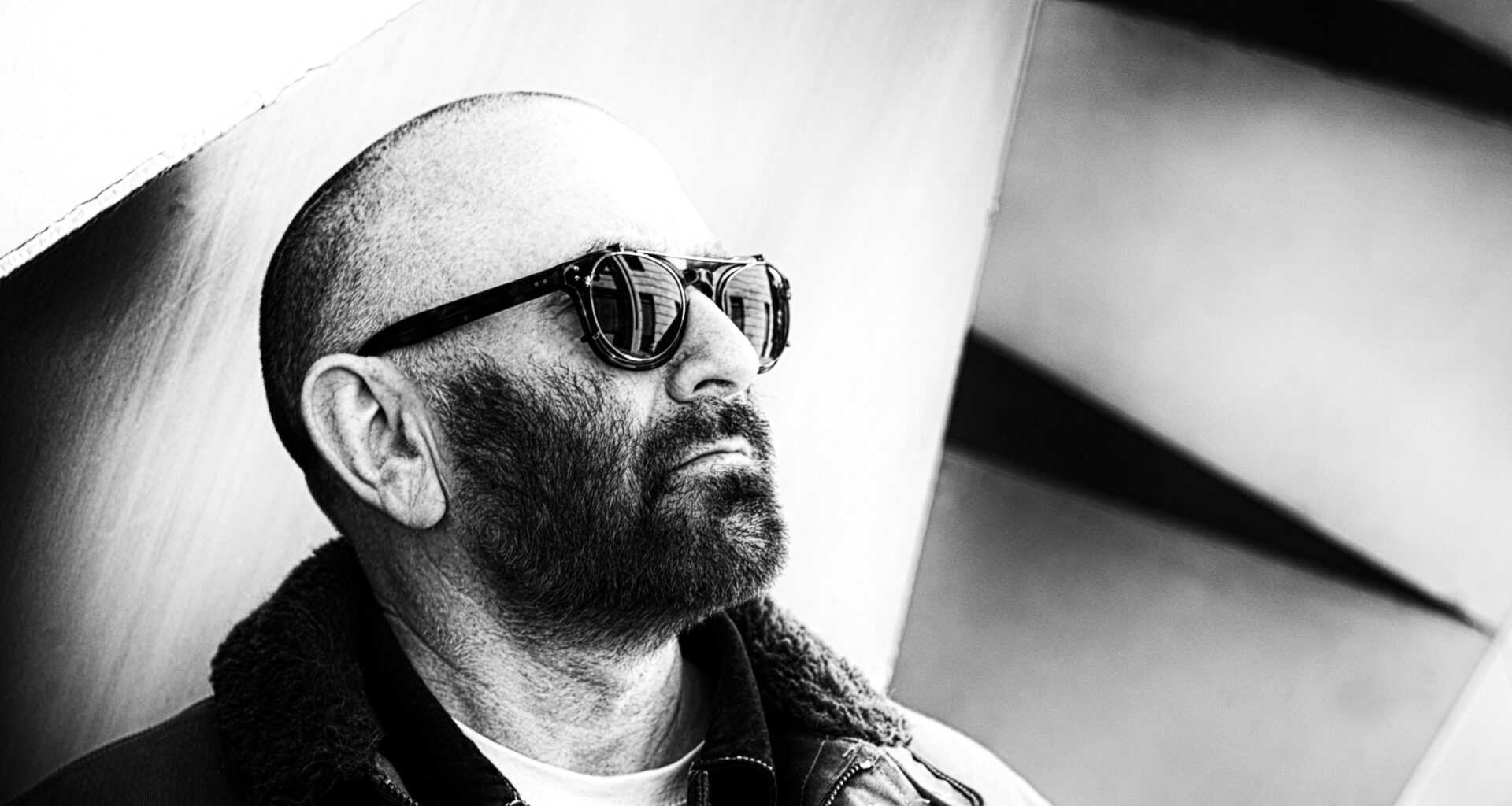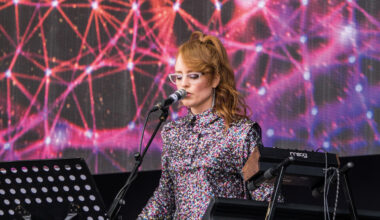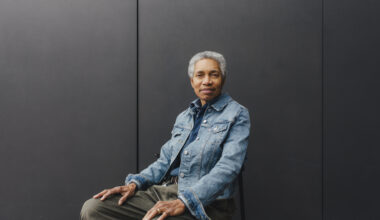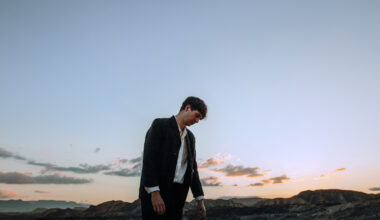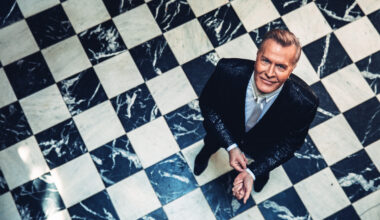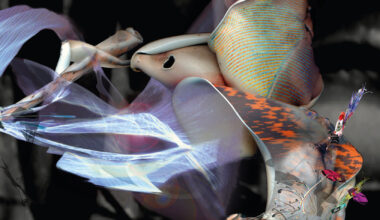The first new Clock DVA studio album in 30 years explores a dystopian world where “machines of intimidation” rule. Founder Adi Newton muses on technology overload, the importance and influence of artistic experimentation, and how a 1970s Sheffield theatre workshop first turned him onto electronic music
“The Bauhaus movement was about making good things – things that will last and look great – then concentrating on more useful and interesting matters,” says Adi Newton, founder and ongoing member of sometime denizens of the Sheffield scene, Clock DVA. “What we’ve got today is consumption, built-in obsolescence and change for the hell of it. We’re being made slaves to that necessity.”
The Bauhaus reference is typical. Since his teens, Newton has been engrossed in the great art factions, the days of Futurism past. His talk is peppered with allusions to the likes of Paul Klee, Dada, suprematist artist Kazimir Malevich and Russian poet Vladimir Mayakovsky, as well as theories such as projectivism and connectionism – all the towering ideals of the early 20th century from which he draws inspiration over 100 years on.
“At the turn of the century in Russia, there was a huge field of artistic experimentation, mapping movements of the body in a way that looks like CGI,” says Newton. “Ideas like cosmism – the belief in mankind’s evolution into the stars. They were thinking hundreds of years ahead.”
Now that we are in the actual future, with dreams of mechanisation and automation having come to pass, all is not well, Newton asserts. Our current state of profound crisis is the subject of Clock DVA’s latest album, ‘Noesis’ – the first DVA release proper since 1993’s ‘Sign’.
“Technology has made a massive difference to all aspects of society but brings with it dissatisfaction, alienation and also the narcissism of social media,” says Newton. “There are inbuilt problems with it, and that’s what we’re trying to say with ‘Noesis’. ‘The Fall Of The Dream Machine’ is about how people are occupied by Z-list celebrities getting married, this horrible rubbish on an enormous scale. Nonsense, really. Or TikTok – individuals posting videos of obscene things and others being drawn into it.
“These technologies have become ubiquitous and we have become controlled by them. We’re controlled by electricity and economics… the reliance we have on technology is frightening. We should move towards something like play, to being freed by mass unemployment. We should be enjoying ourselves, having a good time. Instead, we’re still in a world where people are living on the streets or are deprived of water.”
It’s paradoxical, although quite logical, that Newton and his musical partner TeZ (Maurizio Martinucci) should explore these topics via electronic means. Newton is no Luddite. The title of ‘Noesis’, he explains, alludes to “purely intellectual apprehension”.
“It’s an idea of how we think, why we think, and so on. The layers of apprehension and the dystopian fears the mind evokes can only be conveyed through electronic music – in this case, the dark ambiences and minimal pulses of tracks like ‘The Simulation Of Self’, ‘Projected Life’ and ‘The Engines Of Intimidation’.”
Newton once spoke of Kazimir Malevich’s painting ‘Black Square’ and its deep influence on early Clock DVA (“It was saying nothing and saying everything at the same time”). ‘Noesis’, although a very different mutation of Clock DVA in comparison to their earlier work, seems to proceed notionally from the black space delineated by Malevich.
Like a great many of the musicians who would later make up the Sheffield scene, Adi Newton’s creative journey began back in the mid-1970s with Meatwhistle, the “theatrical activity group” set up by husband and wife team Chris and Veronica Wilson in 1973. It was the perfect place for would-be free thinkers to hang out.
“Yeah, I was there,” recalls Newton. “There were quite a few of us – all the Human League/Heaven 17 guys too – and it was the only place in Sheffield operating as a cultural hub. It was initially theatre but grew into different kinds of arts. The council funded it and there was no pressure to make us do anything. We just created our own theatre space. We were all pretty young and it was a great early beginning for us. I met Richard and Mal from Cabaret Voltaire and we started hanging out, socialising… we all had this interest in Dada, surrealism, Burroughs, Ballard, but there were very few people in this ‘Sheffield scene’.”
It’s interesting that the key members of Meatwhistle chose ultimately to drift towards music, and electronic music in particular. Newton’s head was quickly turned in that direction.
“They had these old tape recorders,” he remembers. “Big old mint-green machines. I’d been messing around with tapes and started using loops. Then we were asked to provide some music for a party. Martyn Ware bought this huge, super-deluxe xylophone with an ‘electronic eye’, so you could vibrate the sound by moving your hand over it. Ian Craig Marsh had started building a big modular system, so we had a strange assembly of instruments. We didn’t know what we were doing – we created a collage, I guess. After that, though, we thought, ‘Maybe there’s something in this’.”
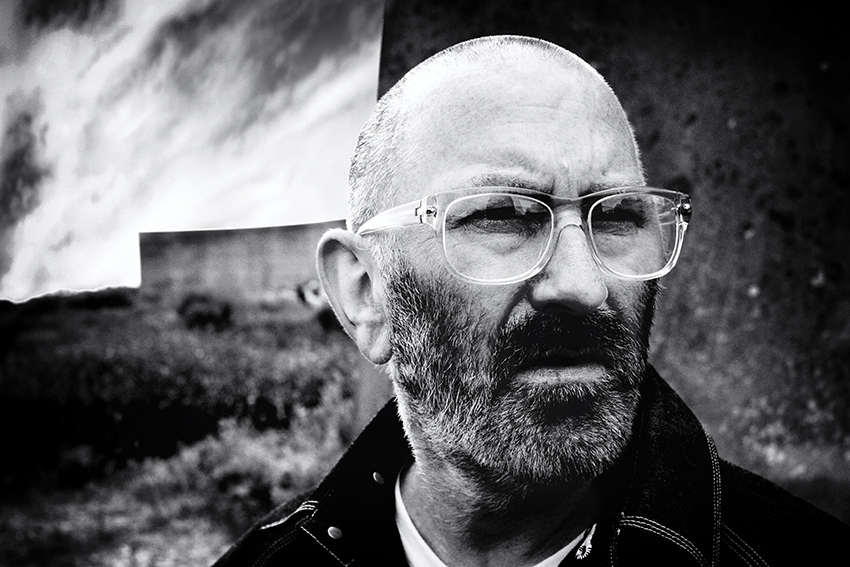
Fuelled by a sonic diet of krautrock and glam – especially Roxy Music – Newton, Ware and Marsh formed a short-lived but prescient outfit called The Future, setting up meetings with record companies rather than merely sending demos they knew were likely to be binned.
“We promoted ourselves as the future of music,” says Newton. “We were very arrogant, but we felt that people needed to be confronted with this music to understand it.”
Both the future and The Future were deferred, however. Newton resorted to making home electronic recordings on his battery of instruments, including the EMS Synthi E and other devices. These were later released on the boxsets ‘Horology’ and ‘Horology 2’ in 2012 and 2015 respectively, via Vinyl On Demand. These late 1970s experiments sound hauntingly primitive, ancient – like scratchy harbingers of a future ubiquity of electronica that seemed both hopeful and remote almost half a century ago.
Yet the iteration of Clock DVA that brought them to prominence in the early 1980s was less electronic in nature. ‘White Souls In Black Suits’ (first issued on cassette in 1980) and ‘Thirst’ (1981) dealt with the tropes of the times in their own particular way – as fraught, existentially anxious white boys expressing themselves through the supposedly antithetical medium of funk.
The discreet use of synths and musique concrète methodology was masked by the bass of Steven James Turner and the quasi-free-jazz saxophone of Charlie Collins shrieking into the void, as if channelling the spirit of Newton’s troubled, weathered vocals.
Sheffield was the focus of critical attention from the music press at this point. A divide would develop between groups with pop ambitions despite their avant-garde origins, and those such as Cabaret Voltaire who simply couldn’t bring themselves to head in that direction. Clock DVA were somewhere between the two.
Newton was firm friends with the Cabs and shared their left-field predilections. However, after the original Clock DVA split, with some founder members going on to form The Box, he brought in a raft of different musicians, signed a deal with Polydor and, with 1983’s ‘Advantage’ album, looked conceivably set to join fellow Sheffielders The Human League, Heaven 17 and ABC onto a much bigger stage.
“I wanted to use those elements of big production to move what I was doing into a bigger arena, hence reforming after ‘Thirst’ and creating something more accessible with ‘Advantage’,” explains Newton. “I wanted to do it in a good way, not just a commercial way – something with an aesthetic like film noir, psychological, literary and artistic elements – and re-focus it.”
Suddenly, Newton and Clock DVA Mark II found themselves jostling with the pop elite, including one night when they fetched up at the Parisian hotspot Les Bains Douches only to find The Rolling Stones filming a video, in which they were invited to take part as extras. They agreed. However, much like Chris & Cosey, who ultimately baulked at the prospect of going pop with their post-Throbbing Gristle forays into synthpop, Newton felt distinctly uncomfortable with their new context, which he’d felt forced into.
“It did get commercial and popular but we were being primed to be a stadium band,” he says. “Live tours, T-shirts, records, these big goddamn concerts… there was one in Europe and I remember seeing Big Country come on. It felt ludicrous, these big lads with guitars, everyone going mad for them, and I thought, ‘Why am I here? This is ridiculous’. I literally wanted to run away.”
A further schism developed after guitarist John Valentine Carruthers left to join Siouxsie And The Banshees, resulting in a “strange and horrible” situation that Newton felt was needlessly acrimonious.
“It ended in a chaotic bust-up, so I left. I’d had enough. That, and Big Country, the albums, T-shirts, tours… I’m not here for that.”
He formed the pointedly monikered The Anti Group, leaving behind all prospects of stardom and the nightmare that might have entailed.
Since the late 1980s, Newton hasn’t been consistently active. He moved to the Netherlands, taking breaks to try to set up record labels or simply to live a normal life, doing everyday things. Many of his activities have slipped below the radar in the UK as he has prioritised other territories.
“We’ve not really been focused on England, especially with this Brexit thing,” he says. “It solidified my belief about England not wanting to be part of a bigger world. I always considered myself a European because I interacted with Europe so much. Thing is, via digital streaming, we’re all working on a global scale these days. That’s the nature of the technology.”
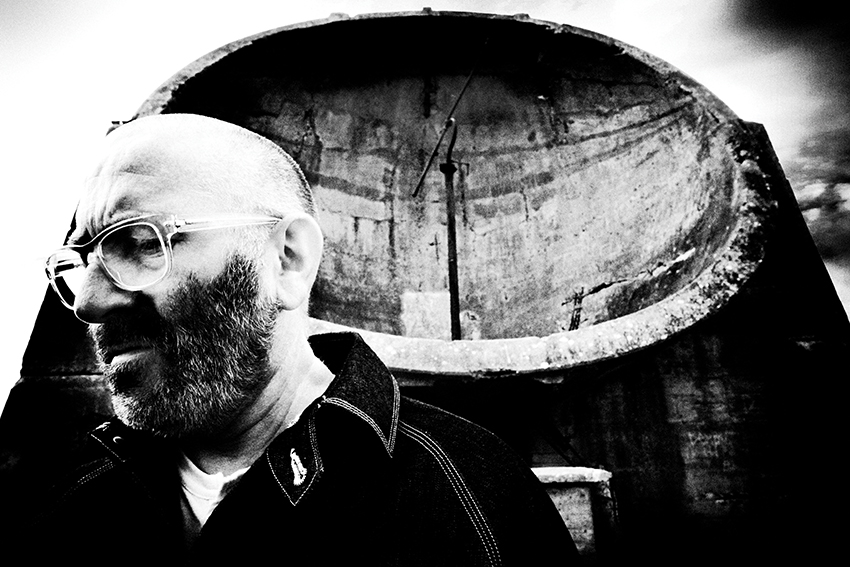
Furthermore, his recording career has seen Newton increasingly embrace electronica, taking him full circle to where he began.
“I found a way of being able to control sound in an almost mathematical, precise way. So it was me going back to my old days of pure electronics. My history is seen as beginning with ‘Thirst’, where the electronic elements are more subdued in the mix.”
Having met his current musical partner TeZ back in the 2000s on what are now the ancient internet ruins of MySpace, that immersion is complete. As TeZ explains, before he became a collaborator he was a fan of Clock DVA and The Anti Group, who he saw perform in Italy in 1987.
“I followed the evolution of Adi’s art and felt aligned with that kind of spirit,” he says. “The feeling behind the music, the graphic art, booklets, texts, the more esoteric meanings. I was also in touch with people like Coil, writing letters, exchanging material through the post – cassettes, magazines, artworks. It happens digitally today, but back then it was physical. And I was into computer music – Ambisound. This is the next level of immersion – how we will further express ourselves through music and technology.
“I saw Adi publish something on MySpace – the first thing I’d seen from him in over 10 years. It was my chance to get in touch and speak about ambisonics [a state-of-the-art multichannel sound system] – mostly promoted through live performance, not records. You can put ambisonics on record but it’s very complicated. I wanted to speak about the possibility of a digital installation, an immersive space. Adi liked the idea and we started to talk about it.”
Newton has fully taken on board ambisonics, to the extent that he and TeZ are putting on a presentation in New York later this year at an “ambisonic museum”, encouraged and assisted by a group of Clock DVA enthusiasts.
It’s significant that before Newton was a musician, he was a painter. And it’s significant that the credits for ‘Noesis’ give equal status to Gabriel Edvy, responsible for the artwork “visuals” accompanying the album.
“Painters have always been involved in music,” he reasons. “Paul Klee wrote a book on sound. At the turn of the century, you had Russian artists translating drawings into sound. Today, a lot of artists expand into other media – audio, video, installation– to express themselves. So I think the connection between sound and vision is very close. I’m a painter. That’s what I originally did, and I still paint now. Music is like painting – laying something down, creating a form and then fleshing its form out with colour and so on.”
An increasing number of musicians have applied the formal sensibility of early 20th century avant-garde visual art to music, but in the early 80s this was a strangely uncommon practice, despite the number of musicians with an art school background. Discovering Dada – the Zurich-based (anti) art movement – was an epiphany for Newton, however.
“Suddenly, I was exposed to the world of Marcel Duchamp, Man Ray, Francis Picabia and Hans Richter,” he says. “It gave me a great impetus to devour more and more of that. And then leading on to Surrealism, later Andy Warhol, found objects…”
For Italian musician TeZ, meanwhile, the Futurist movement was a part of his cultural background, albeit historically distant.
“The feeling of Futurism was strong but also taboo because of the connections between the Futurists and the Fascist Party,” he says. “If you read the original artists, they are interesting because they act like a virus in the system – infiltrating and subverting. But that is not so well understood in Italy. For me, it was clear from the ‘The Art Of Noises’ idea [Luigi Russolo’s 1913 Futurist manifesto], and it’s so fundamental to our work as musicians.”
Newton has worked with a great many musicians over the years, but in TeZ he seems to have found a partner he’s in perfect sync with.
“Absolutely!” agrees TeZ. “How we work can’t be explained by ordinary means of communication. An example… we were preparing a live show, and Adi sent me some material for recordings. The day before, I’d been talking to a friend about biocommunication, getting sound from living things – plants – and I was very, very excited. Then the morning after, I received the tracks from Adi… and the very first one involved this scientist guy working in biocommunication!”
For TeZ, Clock DVA are much more than a sonic data stream.
“There are conceptual, philosophical implications to Clock DVA that look to change the way we live,” he explains. “I think this is very important to express, this sense of looking inwards – what kind of universe might there be? It’s a big part of why we do this together.
“All of the tracks we produce are the result of close human interaction, as with the live aspect also. There’s a very strong physical element. I do other remote collaborations with artists and that’s fine, but with Adi we always wanted to be together in the studio.”
Adi Newton agrees wholeheartedly. Despite his increased immersion in electronics over the years, his goal is to emphasise the person, rather than render them obsolete.
“We’re trying to reinject the ‘human-ness’, the feel,” he says. “That’s why it’s important that there are vocals on the albums – words, emotions, breath, heart. When I look at AI graphics, the rendering is very beautiful, but when I look into the eyes, they’re empty – like shells. But I look at a painting by Bacon or Freud and I see something of their subjects’ human spirit.”
‘Noesis’ is out on ARMComm / Rizosfera
